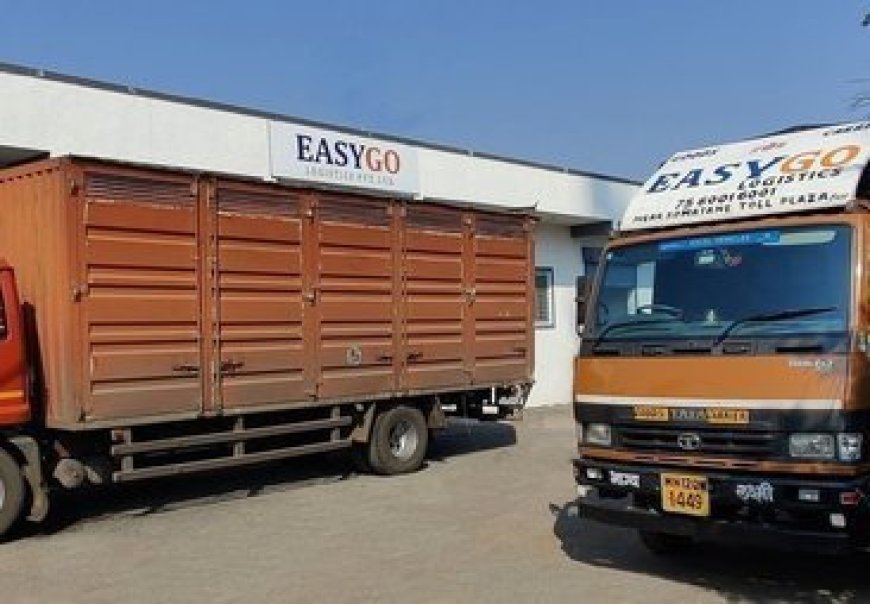Decoding Part Load Transport Pricing: What Every Business Should Know in 2025

Introduction
In a rapidly growing economy like India’s, logistics plays a vital role in connecting businesses across vast geographies. For small to mid-sized shipments that don’t require a full truck, part load transport has emerged as a cost-effective, flexible, and efficient solution. However, many business owners still find themselves puzzled by how pricing works in this model—especially in a post-pandemic, tech-driven logistics landscape.
This blog will demystify part load transport pricing in 2025, uncover the core components that influence cost, and offer actionable tips for businesses to save money using online truck booking services effectively.
What Is Part Load Transport?
Before diving into pricing, let’s quickly define what part load transport actually is.
Part load transport (also known as LTL—Less Than Truckload) refers to shipping goods that do not require a full truck. Your cargo shares space in a transport truck with consignments from other shippers. This method is perfect for small businesses and startups that need affordable intercity or interstate logistics.
Why Pricing for Part Load Is Different in 2025
As technology evolves and fuel prices fluctuate, the cost model behind part load transport is no longer as simple as weight x distance. Several factors now come into play, including:
-
Real-time route optimization
-
Fuel surcharges and tolls
-
Smart consolidation technology
-
Peak-hour congestion pricing
-
ESG regulations and carbon tracking
These dynamic components have made pricing more efficient, but also more complex. Let’s decode each element below.
1. Distance and Route Complexity
This remains the backbone of pricing logic. However, in 2025, route optimization software evaluates more than just kilometers—it factors in:
-
Road conditions
-
City entry timings
-
Expected delays due to urban congestion
-
Tolls on specific highways
For example, a shipment from Pune to Bangalore may cost less than Pune to Jaipur, simply due to faster, toll-free expressways.
2. Cargo Volume & Weight
Both volume (CBM) and weight (kg or tons) are used for rate calculation—whichever is higher.
Pro Tip: Always ask your logistics partner whether they charge by volumetric or gross weight.
If your consignment is bulky but light (like pillows or plastic products), you’ll be billed by volume. For heavier goods like tiles or hardware, weight becomes the key metric.
3. Load Consolidation & Handling
One of the benefits of part load transport is that you only pay for the space you use. But here’s the catch: load consolidation affects your pricing.
A service provider that has a well-planned consolidation network will be able to match your goods with complementary shipments. This reduces empty miles and allows them to offer you better rates.
If your cargo requires special handling, palletization, or extra manpower, expect surcharges to be added.
4. Pick-up & Delivery Zones
Pick-ups from remote areas or deliveries to locations with restricted access (like busy city centers or warehouses with timing slots) may come with added fees.
Also, last-mile delivery charges differ by vehicle type—mini trucks, tempos, or heavy-duty transport trucks.
5. Booking Platform & Technology
Online truck booking platforms are revolutionizing how logistics is priced. In 2025, many platforms use AI to dynamically calculate freight rates in real time.
Benefits of online booking:
-
Transparent pricing with breakdowns
-
Instant quotes via apps/web portals
-
Digital PODs (Proof of Delivery)
-
Route tracking and live ETA
Top platforms even offer rate calculators where you can input your origin, destination, load details, and get an accurate price within seconds.
6. Insurance & Risk Coverage
Insurance is optional but recommended, especially for high-value goods. Some part load providers bundle basic transit insurance into the rate, while others leave it to you.
Make sure to clarify:
-
What’s the maximum liability per shipment?
-
Does the rate include or exclude GST and insurance?
These affect your net landed cost.
7. Seasonal Demand and Surge Pricing
Festive seasons (Diwali, Holi), year-end rushes, and the agricultural harvest period can cause sudden demand spikes.
This is when surge pricing kicks in—rates may increase by 10–30% depending on availability of vehicles. Booking in advance through a reliable online truck booking system helps lock in lower prices.
8. Environmental Costs
With increasing pressure on companies to reduce their carbon footprint, some part load transport providers now offer eco-pricing models.
These models give incentives for:
-
Using green-certified trucks
-
Shipping during low-traffic hours
-
Participating in carbon offset programs
Such sustainable transport solutions might cost slightly more, but they align well with ESG goals and government mandates.
How to Optimize Part Load Pricing for Your Business
Now that you know what affects the cost, here’s how you can optimize your logistics budget using part load services.
Use Smart Packaging
Efficient packaging reduces CBM and saves you money. Stackable, palletized, or modular boxes are best.
Book Early
Avoid peak-hour or last-minute bookings. Early scheduling leads to lower rates and better consolidation.
Compare Providers
Don’t stick with one transporter. Use multiple online truck booking platforms to compare rates and service quality.
Negotiate Annual Contracts
If you have regular shipments, go for long-term contracts that guarantee better pricing and priority service.
Choose Shared Routes
Select routes that are commonly serviced. More traffic = better consolidation = lower rates.
Case in Point: A Real Example
A Pune-based electronics distributor regularly ships to Delhi, Mumbai, and Hyderabad. Initially, they used FTL (Full Truck Load), incurring high costs and delays due to underutilized capacity.
By switching to part load transport through an online truck booking platform:
-
Freight costs dropped by 35%
-
Deliveries became faster through route-matched shipping
-
Carbon footprint reduced significantly
This is just one of many examples showing how smart logistics decisions can empower Indian businesses.
Final Thoughts
The part load transport model isn’t just about saving space—it’s about maximizing efficiency, minimizing cost, and modernizing logistics. In 2025, as AI, automation, and sustainability reshape the shipping industry, knowing how pricing works gives you a strategic advantage.
Whether you’re a manufacturer, exporter, or D2C brand, understanding the dynamics behind part load pricing helps you make informed, budget-friendly shipping decisions.
Ready to Ship Smart?
Make the switch from guesswork to precision with online truck booking platforms. Track routes, compare rates, and ensure seamless part load transport—without burning your logistics budget.
What's Your Reaction?






























































